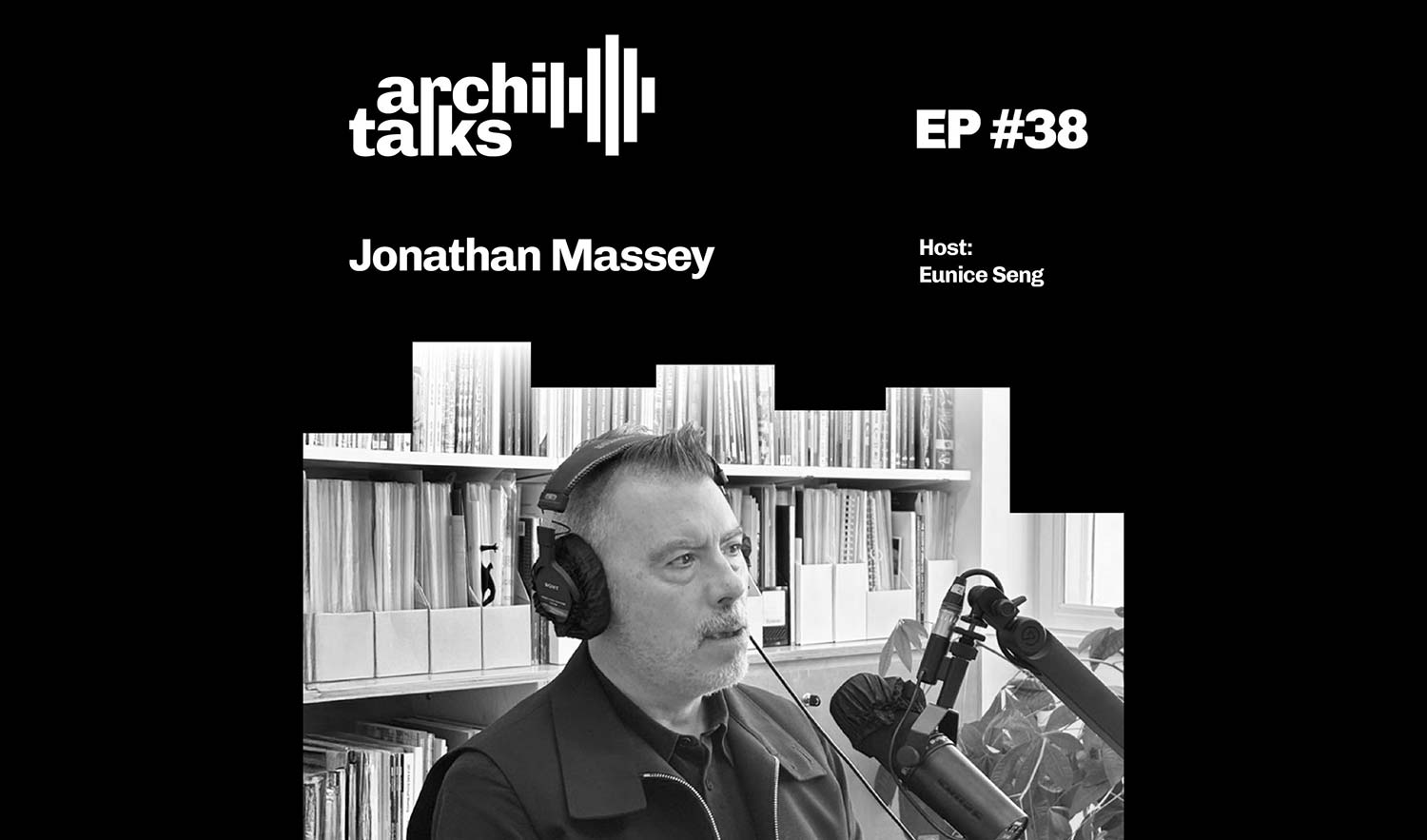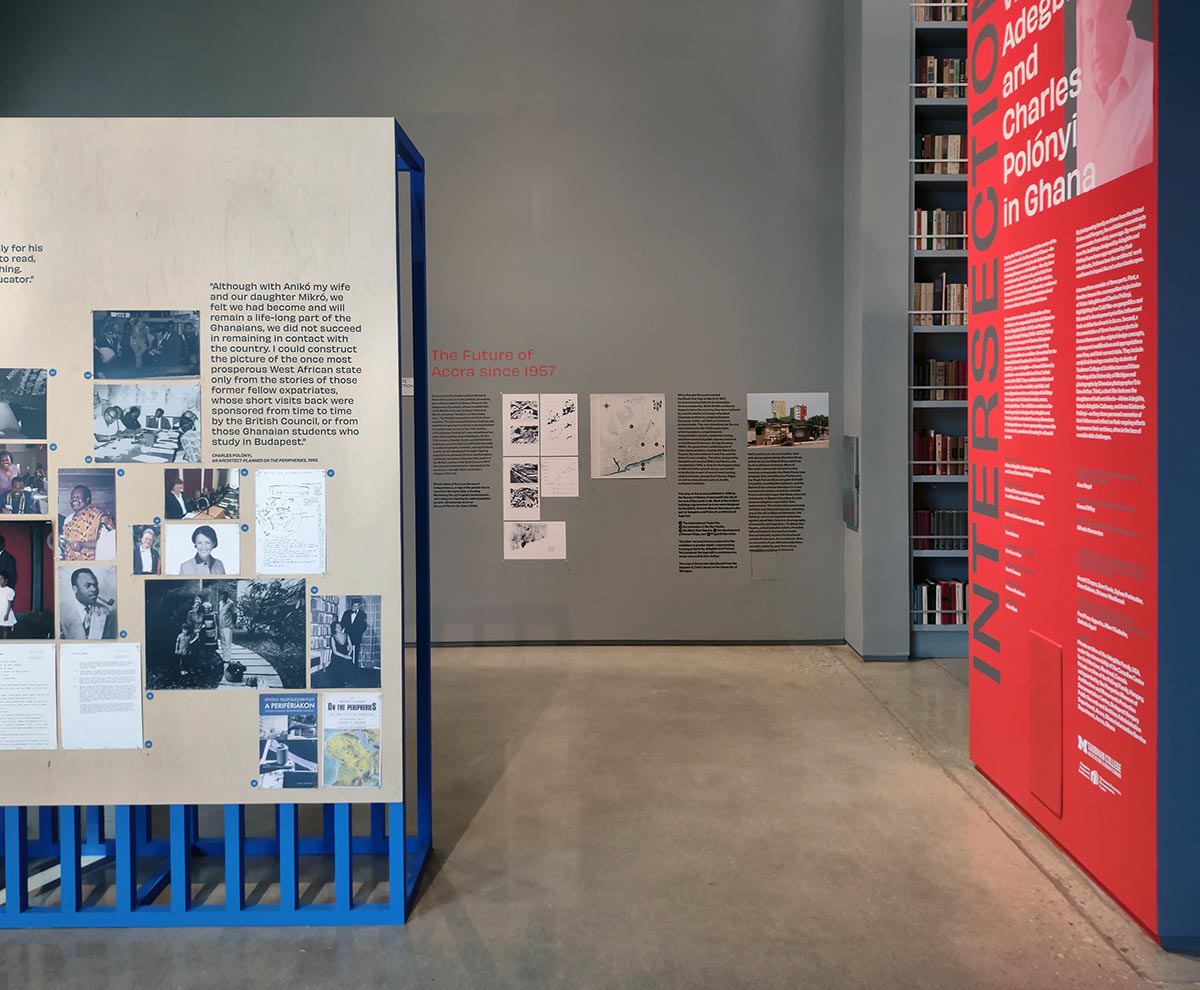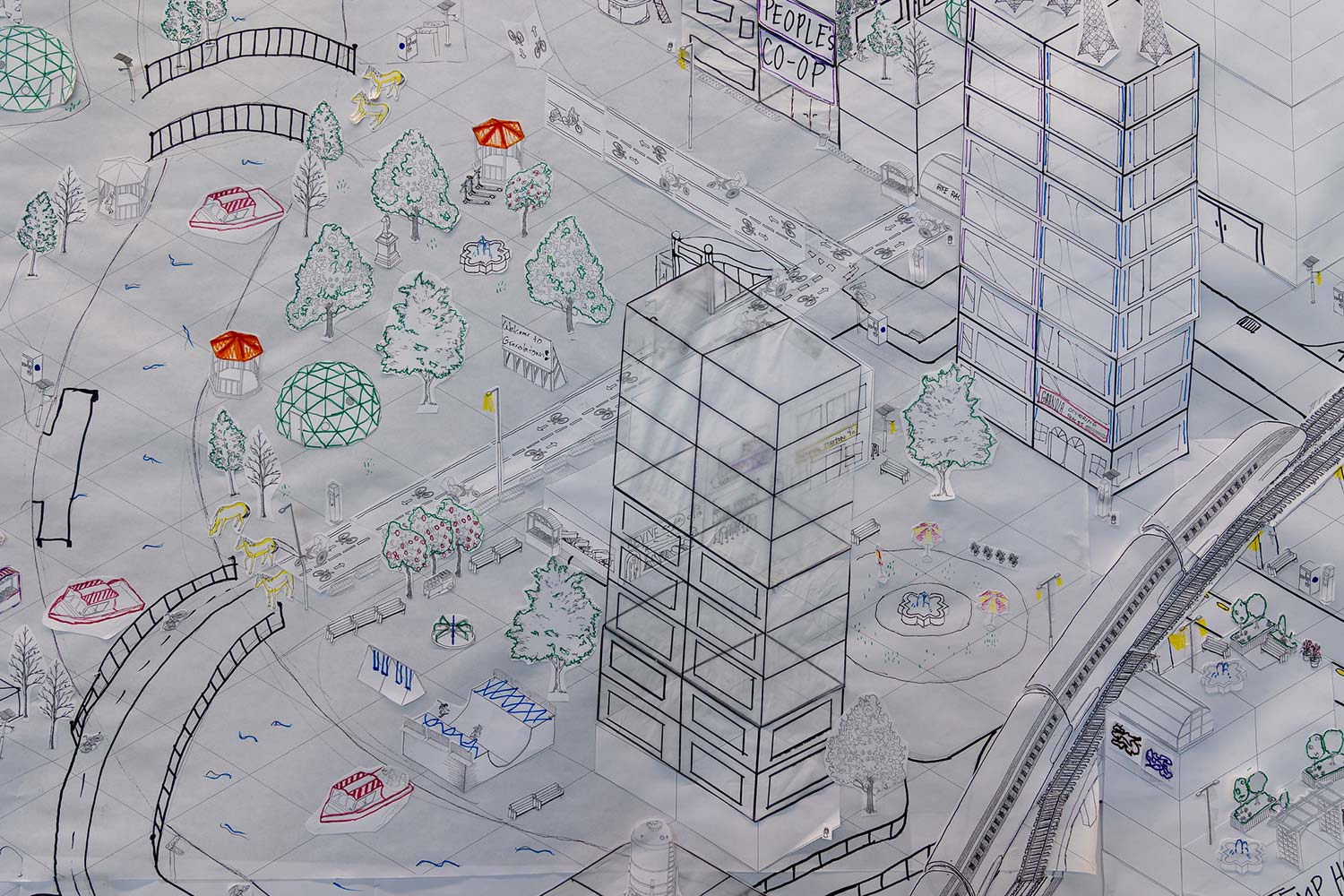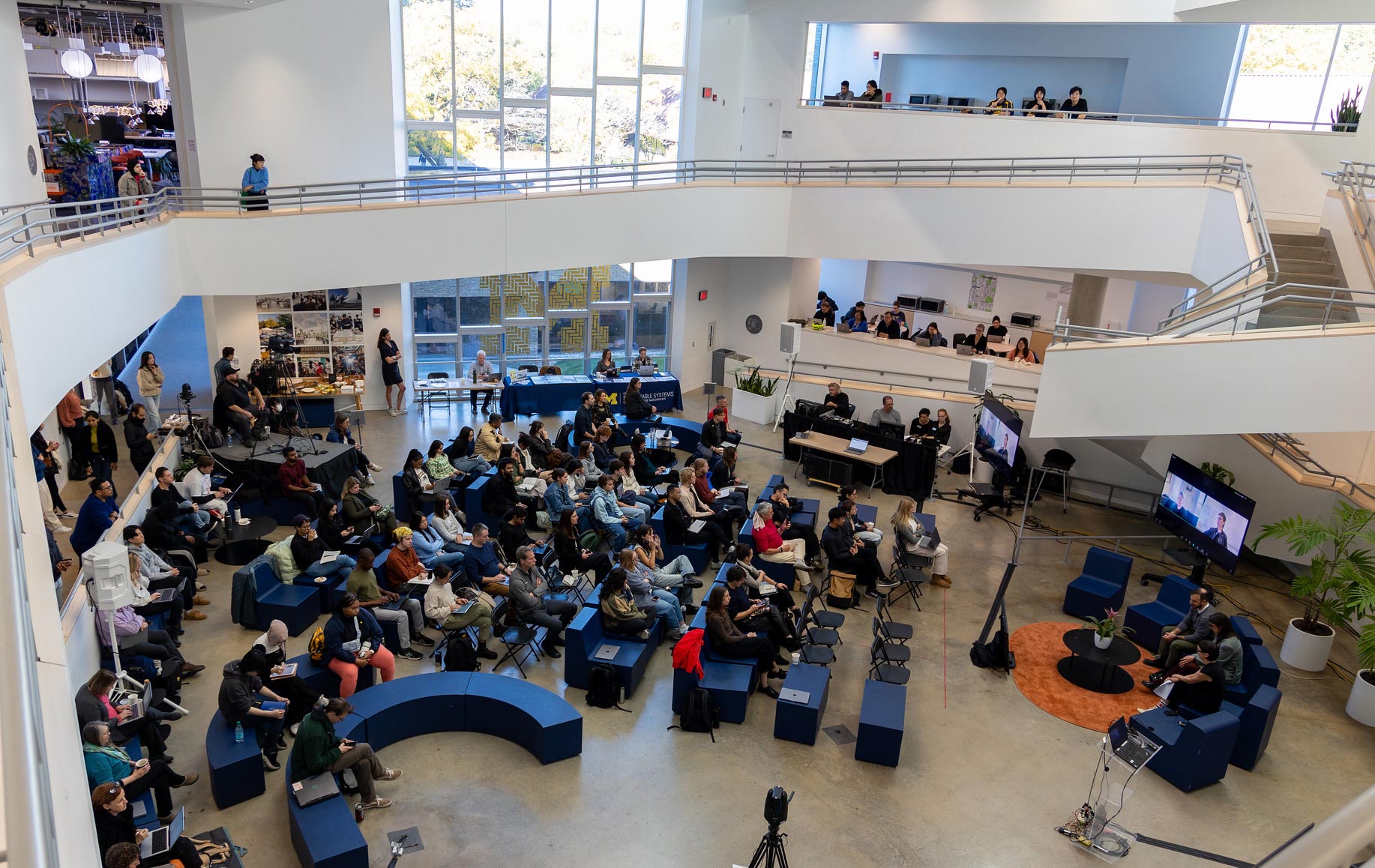
‘Unsettling and inspiring’: Taubman College Climate Futures symposium addresses climate crisis
Some of the nation’s top architects, urban planners, and sustainability experts gathered at Taubman College from October 17-18 to address the dramatic effects of climate change on the built environment — and to explore novel responses to the global crisis.
The Climate Futures symposium, part of the college’s new Climate Futures platform, explored climate migration, climate-resilient communities and universities, environmental justice, artificial intelligence’s environmental impact, climate-conscious construction, degrowth, and more. More than 40 speakers participated in the two-day symposium in person or virtually.
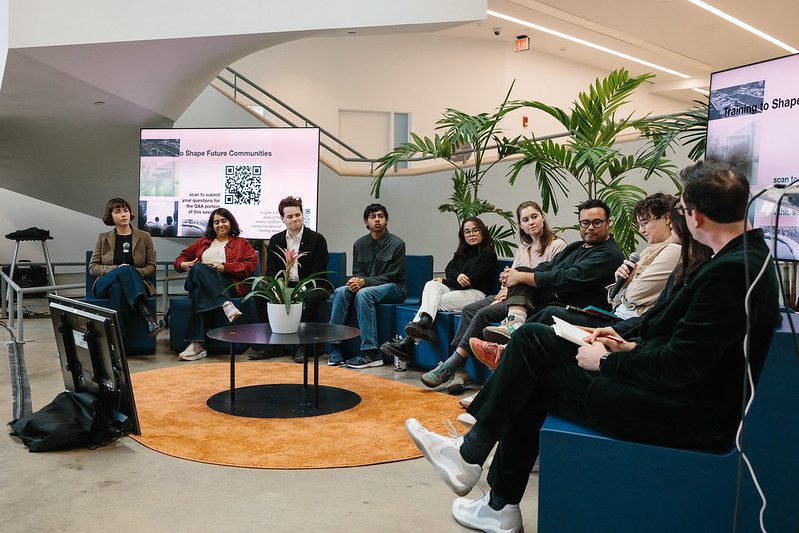
The discussions, noted Taubman College’s Anya Sirota, were both “unsettling and inspiring.”
“We are living in what some have come to call the age of ‘apocalyptic optimism’ — a time when the climate crisis is not just an abstraction but an undeniable force,” said Sirota, associate dean of academic initiatives and associate professor of architecture. “Yet we continue to gather, to discuss, as if there is still room, even an imperative, for optimism. Perhaps this reflects our profession’s need to believe in the power of design, the power of the built environment to right some of these wrongs. In tandem, of course, it gets more difficult to deceive ourselves: sea levels are rising, storms are intensifying, and people — communities — are being pushed from their homes, either by the water itself or by the slow degradation of the economies and ecologies that once sustained them.”
The increasing frequency of heat waves, cyclones, wildfires, and other extreme weather events have fueled climate migration, as people relocate to areas they consider “climate havens.” Michigan is one such place. However, Jesse Keenan, associate professor of sustainable real estate and urban planning at Tulane University, said climate change touches every corner of the globe.
“Warning: Nowhere is safe from climate change,” Keenan said. “Climate havens are a fiction.”
Mél Hogan, associate professor at Queen’s University, discussed a purely human-made danger to the environment: the huge data centers used to power artificial intelligence.
“AI and their massive data centers are consuming resources, polluting environments, and contributing to climate change at an alarming rate on an already mangled planet,” Hogan said.
From a planning perspective, Robert Goodspeed, chair and associate professor of urban and regional planning at Taubman College, said population growth and economic vitality in Michigan depends on an urban resurgence. That resurgence, however, should be fueled by smart growth policies that create thriving, climate-resilient communities that are magnets for young talent.
“Urban stagnation and decline may continue, even if there is growth, in the absence of the adoption of smart growth policies to curb urban sprawl and encourage infill,” Goodspeed said.
How are cities and community groups doing their part?
In Toronto, the city declared a climate emergency in 2019 and has adopted an ambitious strategy to reduce community-wide greenhouse gas emissions to net zero by 2040. One facet of that is a program that tracks and captures heat wasted from large buildings through sources such as wastewater and sewage pipes. One Toronto hospital will reduce its emissions by 85 percent just by tapping into a sewer trunkline and reusing that waste heat, said Duncan MacLellan, project manager for environment and energy for the city of Toronto.
In Detroit, a nonprofit organization called Detroit Future City helped the East Poletown neighborhood buy 12 vacant lots and establish Circle Forest on that land, a model for neighborhood improvement and resilience. The community-owned natural area includes 500 new trees, wildflowers, a butterfly garden, a walking path, and an outdoor movie theater, said Anika Goss, president and CEO of Detroit Future City.
“It’s the most beautiful thing you’ve ever seen,” Goss said. “People can’t believe that this is happening in Detroit.”

Jen Maigret, Taubman College professor of architecture and faculty director of the Climate Futures platform, noted that the symposium successfully brought together “an abundance of thought leaders, culture agitators, idea inventors, world makers, collective builders and policy dreamers who share both passion and a feeling of urgency for the emerging range of climate challenges that are rapidly and dynamically impacting the world we all share.”
“Those of us who chose to be here today have also likely experienced feelings of fear, uncertainty, or anxiety — especially when our imaginations are constrained by isolation or outdated belief systems,” Maigret said. “My greatest hope for this symposium is that it will model the power of collectivity, and by extension, demonstrate the potential for a Climate Futures platform to help us organize ourselves, our ideas, our passions, and our imaginations around a multitude of futures that will help generate just relationships with one another and with the earth.”





